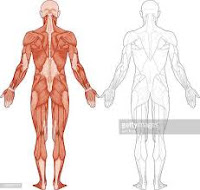PRINT MOTIVATION
Print motivation is being excited about and interested in books.
What can you do?
You can take a sack or a bag and to put different books of animals inside. Each one of them should choose the book that they like most to read.
PRINT AWARENESS
Understanding that print on a page represents words that are spoken, knowing how to follow words on a page, and knowing how to hold a book.
What can you do?
The children will choose a story that they like and with the help of the teacher they will read it pointing to the letters written with their finger.
PHONOLOGICAL AWARENESS
Understanding that words are made up of smaller sounds. Hearing and playing with smaller sounds in words. Phonological Awareness comes before phonics.
What can you do?
You can put different card about clothes with similar sounds, for exemple: cap, hat. We should read it and then, the teacher will tell them to close their eyes. The teacher will add another card with a very different sound and they have to say which is the card that the teacher had added.
VOCABULARY
Vocabulary is knowing the names of things, feelings, concepts, and ideas. Knowing the meaning of words and connecting words to objects, events, or concepts in the world.
What can you do?Any book will help with this, but choosing ones with words not used in daily conversation and nonfiction books are especially helpful or label things.
NARRATIVE SKILLS
Narrative skills is being able to describe things and events. Being able to tell and understand stories.
What can you do?
You can tell a story, for example the gluttonous caterpillar, and when you finish the story, you can make them questions to check if they understand the all story. Also you can do a theatre with the same story.
Story link :https://m.facebook.com/story.php?story_fbid=3018567148165554&id=100000368940930&extid=lKGJTXVuZFZKlc94&d=null&vh=i
Story link :https://m.facebook.com/story.php?story_fbid=3018567148165554&id=100000368940930&extid=lKGJTXVuZFZKlc94&d=null&vh=i
LETTER KNOWLEDGE
Understanding that letters are different from each other. Recognizing letters and knowing that they have different names and sounds.
What can you do?
In a box full of sand and letter shapes, the child must find the letter indicated by the card and stick it on top.





















